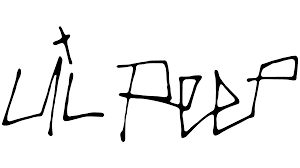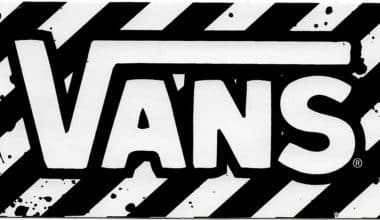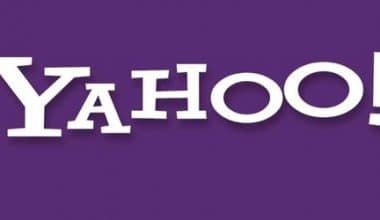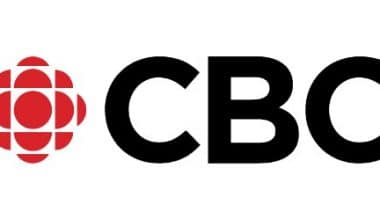Bank of America, with headquarters in Charlotte, North Carolina, is one of the largest financial institutions in the United States. Amadeo Giannini formed it in 1904 under the name “the Bank of Italy.” It was renamed in 1930. The Bank of America logo reflects the company’s core values, as we’ll see in this guide. But first, let’s look at the history and significance of the Bank of America logo.
History and Significance Of The Bank Of America Logo
The history of the Bank of America logo may be divided into two eras: the first, elegant and classic, from 1969 to 1998, and the second, progressive and passionate, beginning in 1998 and continuing today. Though for such a powerful and respected corporation, Bank of America’s emblems had been rather consistent, with only two different conceptions adopted over the years, and all other alterations were more refined.
The Bank Of America Logo from 1969 – 1980
The Bank of America logo was first introduced in 1969. It was written in black and white, and the symbol on the right was very elegant and streamlined. The lettering was done in full capitals in a custom typeface, with the ends of the clean and straight letter lines extending. The badge was a stylized “BA,” with both letters merged into a single smooth shape with large rounded lines and shorter horizontal bars.
The Bank of America Logo from 1980 – 1998
The 1980 revision made the symbol the focal point of the logo, expanding it and positioning it above the wordmark. This version’s writing was done in the title case of a bold and simple Helvetica typeface, conveying a sense of responsibility and confidence. The shapes of the insignia were cleaned and improved, and it now appears elegant and notable.
The Bank of America Logo from 1998 – 2018
In 1998, the Bank of America logo received a fresh concept and a vivid color cake. In one line to the left of the trendy red and blue insignia, an intense blue wordmark in a slightly narrower but still bold sans-serif typeface was inserted. The emblem was a smooth rhombus made up of six rectangles,. Two of the rectangles were blue (on the left), while the others were red. Thin white lines separate the rectangles. The bank’s symbol, which resembles the American flag, also resembles a blanket, which provides its consumers with a sense of security, safety, and warmth.
The Bank of America Logo from 2018 – Today
The 2018 revision enhanced the curves of the symbol, thickening the white lines. The Bank of America logo was changed to a darker blue, and the connection to the American flag is now even stronger. The wordmark was also redone, and the logotype now included a simple and clean sans-serif typeface with plenty of space between the letters in all capitals.
Elements Of The Bank Of America Logo Design
Symbol
Since 2001, the current Bank of America logo has been in use. It was accepted following the bank’s restructuring. The logo displays the bank’s name in blue and a pattern of blue and red stripes on the right. The colors were chosen to underscore the bank’s relevance to the nation, as they plainly allude to the color palette utilized in the US national flag. According to others, the emblem works successfully because it appeals to Americans’ patriotic instincts. This has to be the primary cause for the bank’s enormous success in the United States and elsewhere.
Color and font
The bold and clear capital writing from the Bank of America logo is set in a robust and stable sans-serif typeface. This typeface exudes confidence and professionalism. With minor alterations, Camphor Pro Heavy, Rig Shaded Bold Face, or Elisar DT Bold are probably the closest fonts to the one used in this emblem.
The color scheme of the Bank of America logo is, predictably, based on the famous blue-red-white tricolor of the United States flag. Aside from their official heraldic meanings, these three colors work well together to give a sense of excellence, knowledge, attention to detail, and safety.
What Is The Bank Of America?
Bank of America (BofA) is a U.S.-based multinational company that offers financial and investment banking services. The bank is a global leader in business and investment banking, as well as wealth management. In the United States alone, it serves about 66 million customers, including individuals, institutions, and businesses. Bank of America is present in all 50 US states, as well as 35 countries in Europe, Asia, the Middle East, and Africa. The Bank of America headquarters are in Charlotte, North Carolina.
Origins: When Did The Bank of America Start?
The Bank of America can be traced back to the Bank of Italy, which was formed on October 17, 1904, in San Francisco, California, by Amadeo Giannini. Following the acquisition of BankAmerica by NationsBank, the bank was renamed Bank of America. As a result of the transaction, the bank surpassed JPMorgan Chase to become the second-largest bank in the United States. The Bank of America had 205,000 workers, 4600 retail financial facilities, and 15,900 automated teller machines as of 2019. (ATMs). Furthermore, the bank earned US$91.24 billion in income in 2018. Brian Moynihan is the current chairman and CEO of Bank of America.
Who Owns Bank of America?
Bank of America is a publicly traded commercial bank, which means that anyone can own a small portion of it.
What Was Bank Of America Before It Became Bank of America?
The Bank of America was formerly known as Bank Of Italy before it was changed to Bank of America in 1930.
Bank Of America Headquarters
Bank of America has its main headquarters are in Charlotte, North Carolina, in the United States. The Bank of America Corporate Center is located at 100 North Tryon Street in Charlotte, NC 28255. The Charlotte headquarters house the majority of the company’s executives. In addition to its main headquarters, Bank of America has five primary hubs around the world. These are located in New York City, Hong Kong, Toronto, London, and Minneapolis.
The bank’s operations are divided into five regions: the United States and Canada, Europe, the Middle East, and Africa (EMEA), Latin America, and the Asia-Pacific. The bank maintains offices for local operations in each region. Bank of America has corporate offices in Colombia, Argentina, Peru, Chile, Mexico, and Brazil in Latin America. A dedicated crew stationed in New York City supports operations in these offices. The Bank of America serves countries like Taiwan, China, Thailand, Indonesia, Malaysia, Hong Kong, Japan, the Philippines, and India. There are offices for the EMEA region team in 19 countries, such as Saudi Arabia and Turkey.
Bank Of America: Values and goals
Through the power of every relationship, the Bank of America improves the financial lives of its clients and communities. The personnel are at the heart of this mission and are critical to achieving responsible growth.
Every day, workers all over the world show their commitment to the company’s mission and to achieving responsible growth by living out the company‘s core values: deliver together, act responsibly, recognize the power of our people, and trust the team. One important part of responsible development is doing things in a sustainable way. One way to do this is to be a great place for our coworkers to work.
Deliver Together
The Bank of America believes in treating each client and teammate like a person and considering every moment as important. With discipline and enthusiasm, they aim to go the extra mile to deliver. The company believes in connecting people on a personal level, with empathy and understanding. They also believe that everything they do for their customers, teammates, and communities is based on a strong business foundation that benefits shareholders.
Act Responsibly.
Ethics and risk management are the foundations of our business. Bank of America understands this quite well. The company is aware that the decisions they make daily have an impact on the lives of others. Therefore, they commit to making decisions that are fair, clear, and based on shared achievement, responsible citizenship, and community-building ideals.
Recognize The Power Of The People
The Bank of America tries very hard to help all of its workers reach their full potential. They believe that the different origins and experiences strengthen the brand. The company values each individual’s thoughts, style, sexual orientation, gender, gender identity and expression, race, ethnicity, culture, age, ability, and experience.
Trust The Team
Great teams are formed on mutual trust, shared ownership, and accountability. The company operates as one organization and thinks that by working together, it can best address the full demands of clients while also delivering value to the shareholders.
Environmental, Socioeconomic, and Governance Concerns (ESG)
ESG principles assist in defining how Bank of America achieves responsible growth and contributes to the global economy. The ESG leadership, in collaboration with the Capital Deployment and Public Policy efforts, determines how the company deploys capital and resources, influences business processes, and helps determine how and when to use its voice in support of its values.
The ESG, Capital Deployment, and Public Policy teams are responsible for the company’s outreach to stakeholders on social and governance issues, as well as the implementation of innovative ways to deploy capital and expand business opportunities in support of the broad themes outlined in the United Nations Sustainable Development Goals, such as affordable housing, sustainable energy, clean water and sanitation, education, and health care.
The History and Timeline of Bank of America
1998
McColl became chairman and CEO of the new corporation. Coulter, on the other hand, resigned as president in the fall of 1998, amid speculation that he and McColl were feuding about some of BankAmerica’s earlier poor loans and lost earnings.
Until the 1998 merger with NationsBank, BankAmerica continued to run its new subsidiary as Seafirst rather than Bank of America.
However, D.E. Shaw sustained enormous losses following Russia’s bond default in 1998.
Bank of America had $570 billion in assets in 1998, as well as 4,800 locations in 22 states.
2001
Kenneth D. Lewis is appointed chairman and CEO in 2001. The company concentrates on brand awareness.
McColl stepped down in 2001 and Ken Lewis took over from him.
2002
The corporation also worked on its brand image. Thus, raising its advertising spending to $145 million in 2002, a 50% increase over the previous year.
2004
Bank of America announced in 2004 that it would buy Boston-based FleetBoston Financial for $47 billion in cash and equity.
After purchasing its main competitor in California, Security Pacific Corporation, in 1991, Bank of America became the first bank in the United States to offer coast-to-coast operations. With the acquisition of FleetBoston Financial Corporation in 2004, it expanded throughout New England, and by the early twenty-first century, it was running more than 5,500 bank branches in more than 20 US states and doing corporate and investment banking in various nations worldwide.
2005
Bank of America announced on June 30, 2005, that it will buy credit card giant MBNA for $35 billion in cash and equity.
2006
On November 20, 2006, Bank of America announced the acquisition of The United States Trust Company from the Charles Schwab Corporation for $3.3 billion.
2007
The company announced a $2 billion repurchase agreement with Countrywide Financial on August 23, 2007.
As of December 31, 2007, Countrywide was servicing nine million mortgages worth $1.4 trillion.
Beginning with the 2007 race, Bank of America took over the event.
2008
Bank of America stated on January 11, 2008, that it would acquire Countrywide Financial for $4.1 billion.
In March 2008, it was announced that the Federal Bureau of Investigation (FBI) was looking into Countrywide for a probable mortgage and home loan fraud.
On May 5, 2008, LaSalle Bank and LaSalle Bank Midwest branches adopted the Bank of America name.
As the global financial crisis unfolded in 2008, multiple businesses, including Countrywide Financial, the largest American mortgage lender, and Merrill Lynch & Co., Inc., began to struggle.
At the 2008 ALB Hong Kong Law Awards, Bank of America was named Project Finance Deal of the Year.
2009
In its earnings report for the fourth quarter, which came out on January 16, 2009, the bank said that Merrill Lynch had lost a lot of money. Thus, necessitating an infusion of money already negotiated with the government as part of the government-persuaded deal for the bank to acquire Merrill.
Ken Lewis, who had lost the title of Chairman of the Board, announced his retirement as CEO on December 31, 2009, in part owing to the controversies and legal investigations surrounding the Merrill Lynch acquisition.
However, suffering a $3 billion loss, the Singapore sovereign wealth fund sold its entire position in Bank of America in the first quarter of 2009.
2010
Brian Moynihan took over as president and CEO on January 1, 2010, and credit card charge-offs and delinquencies fell in January as a result.
The judge rejected the settlement on September 14. He then instructed the parties to prepare for trial, which would commence no later than February 1, 2010.
The US government accused the bank in 2010 of defrauding schools, hospitals, and dozens of state and local government organizations through misconduct and unlawful actions involving the investing of municipal bond revenues.
2011
Other bankers and brokers were indicted or under investigation as of January 2011.
Bank of America announced plans to sell the majority of its interest in China Construction Bank in November 2011.
In December 2011, the Justice Department announced a $335 million settlement with Bank of America over Countrywide Financial’s discriminatory lending practices.
Forbes placed Bank of America’s financial wealth 91st among the nation’s largest 100 banks and thrift institutions in December 2011.
2012
Bank of America agreed to pay $2.43 billion to resolve the class-action lawsuit over the Merrill Lynch purchase on September 28, 2012.
Bank of America lost approximately 16,000 positions more quickly by the end of 2012, as revenue continued to drop due to new regulations and a slowing economy.
2013
In September 2013, Bank of America sold its remaining share in China Construction Bank for up to $1.5 billion, thereby exiting the nation.
2014
Bank of America sold two dozen Michigan branches to Huntington Bancshares in April and May of 2014.
Bank of America agreed to a near-$17 billion settlement in August 2014 to address claims connected to the sale of hazardous mortgage-linked products, including subprime mortgages, in what was thought to be the largest settlement in US corporate history.
In addition, the Bank of America has 31 million active web users and 16 million mobile users in 2014.
2015
Bank of America began organically expanding in 2015, building branches in cities where it had previously had no retail presence.
2016
Bank of America’s stock price has nearly doubled since early 2016. One of the reasons is that interest rates have begun to climb and are expected to continue to rise.
2017
Bank of America had $635.6 billion in consumer banking assets as of March 31, 2017.
Bank of America had a book value of $24.36 per share at the end of the first quarter of 2017.
2018
Bank of America announced an organic expansion of its retail footprint into Pittsburgh and nearby areas in January 2018. This is to augment its current commercial lending and investment businesses in the area.
Bank of America said in February 2018 that it would grow into Ohio. Thus, focusing on the state’s three largest cities (Cleveland, Columbus, and Cincinnati), which are strongholds of Chase.
The Bank of America also declared in April 2018 that it would no longer provide funding to manufacturers of military-style firearms such as the AR-15 rifle.
By 2018, the number of mobile users had risen to 25.3 million, while the number of locations had decreased to 4,411 as of the end of June.
2020
By the end of the 2020 fiscal year, Bank of America had more deposits than PNC and BNY Mellon combined, making it the 16th largest bank in Pittsburgh. This is considered relatively significant given the market dominance of PNC and BNY Mellon.
2021
Bank of America said in February 2018 that it would grow in Ohio, focusing on the state’s three largest cities (Cleveland, Columbus, and Cincinnati), which are strongholds of Chase. Columbus is the Ohio hub for Bank of America because it is the state capital, is a large city that is growing, and has a Bank of America call center for its credit card business in nearby Westerville.
Within a year of entering Ohio, Columbus saw the bank quickly become the 5th largest in the market by deposits, trailing only banks that are either based in Ohio (Fifth Third Bank and locally-based Huntington Bancshares) or have a significant presence as a result of an acquisition of an Ohio-based institution (Chase and PNC), and ahead of US Bancorp (also with a significant presence as a result of acquiring an Ohio-based bank), Ohio-based KeyBank, and Bank of America is the ninth largest bank in Ohio by deposits as of 2021.
2022
Investment products sold by Investment Banking Affiliates are not covered by the FDIC and may lose value. They are also not backed by the bank. Bank of America Corporation 2022
Facts About Bank of America
#1. Bank of America began as the “Bank of Italy.”
The origins of the Bank of America may be traced back to 1904 when Amadeo Giannini established the Bank of Italy in San Francisco. Founded to assist the area’s working-class inhabitants, primarily Italian-Americans, the bank quickly expanded and became the Bank of America in 1930.
#2. With the acquisition of Merrill Lynch, Bank of America became the world’s largest wealth management company.
Bank of America is the world’s largest wealth management firm, thanks to its acquisition of Merrill Lynch during the financial crisis. It has the largest wealth-management market share in the United States. It also has the largest share of personal trust assets and high-net-worth client assets. The total amount of money held by clients in the wealth and investment management industry around the world is $2.6 trillion and growing.
#3. Bank of America is a banking technology pioneer.
With all of the disruptive payment technologies that have risen in popularity in recent years, as well as the advent of internet-only banks, it may surprise you that Bank of America has emerged as a leader in digital banking technology and acceptance.
Business of America was ranked first in online banking and mobile banking capability in 2016, and the bank also introduced more than 8,500 cardless ATMs. The mobile platform now accounts for 20% of the bank’s deposit transactions, up from 16% just one year ago. Furthermore, more than 22 million Bank of America clients now use the bank’s mobile platform, representing a 13% year-over-year increase.
#4. Several large acquisitions have helped the bank grow.
Bank of America’s phenomenal expansion has not been totally organic over the years. Bank of America’s current size, like that of most other large banks, is the consequence of a series of mergers and acquisitions, particularly in the last 25 years or more.
If you’ve ever wondered what happened to any of these banks, they’re now a part of Bank of America:
- Security Pacific was purchased in 1992. (This was the largest bank acquisition in history at the time.)
- Continental Illinois National Bank was bought out in 1994.
- FleetBoston Financial was purchased in 2004.
- MBNA was purchased in 2005.
- U.S. Trust was purchased in 2006.
- LaSalle Bank was purchased in 2007.
- Countrywide Financial was purchased in 2008.
- Merrill Lynch, which was purchased in 2009.
Furthermore, Nations Bank purchased Bank of America in 1998 but retained the more well-known Bank of America moniker.
#5. Bank of America has more consumer deposits than any other bank in the United States.
Bank of America has $635.6 billion in consumer banking deposits as of March 31, 2017. This makes it the No. 1 retail deposit market share in the United States. Furthermore, this figure is rapidly rising. Bank of America’s retail deposit base has increased by 10% in the last year alone.
#6. It is also one of the most prominent mortgage lenders.
Bank of America is one of the top mortgage lenders in the United States, which may surprise you. In fact, the bank ranks second in retail mortgage origination volume and first in home equity lending in the country.
#7. Bank of America is trading for less than its assets’ value.
Bank of America had a book value of $24.36 per share at the end of the first quarter of 2017. That means the bank is worth around 3.3% less than its assets. While this isn’t quite as remarkable as the discounts of recent years, it’s still like getting $1.00 of assets for $0.97, making Bank of America one of the sector’s “cheapest” bank stocks.
#8. Bank of America has actively repurchased its own stock.
Due to recent low stock prices, Bank of America has bought back a lot of its own shares. When shares traded for less than 55% of book value, the bank determined that share buybacks were by far the best option to boost shareholder value. In reality, Bank of America has spent $12.4 billion on stock repurchases since 2013, including more than $5 billion in 2016.
#9. Bank of America isn’t profitable enough to keep investors happy – yet.
As mentioned earlier, the Bank of America has been trading for less than the value of its assets for quite some time. One key reason is that the bank has failed to achieve the degree of profitability that banking investors prefer. Profitability benchmarks in the industry are a 10% return on equity and a 1% return on assets. While Bank of America is performing better than in prior years, its measures of 7.3% and 0.88%, respectively, do not excite investors.
#10. However, increasing interest rates in the coming years may alter the situation.
One of the reasons Bank of America’s stock price has nearly doubled since early 2016, is that interest rates have begun to climb and are expected to continue to rise, particularly now that Donald Trump is in the White House. In fact, net interest yield has begun to rise, and the bank estimates that another 100 basis point increase in rates may generate $3.3 billion in net interest income over the next year. This type of adjustment could easily push Bank of America’s profitability to an “acceptable” level, bringing the stock’s valuation with it.
What Is Famous About Bank of America?
Bank of America is one of the world’s largest financial organizations, providing a broad range of banking, investment management, and other financial and risk management products and services to individuals, small and medium-sized enterprises, large corporations, and governments.
What Is The Oldest Bank In America?
BNY Mellon is America’s oldest bank. Alexander Hamilton started it in 1784, and its assets are worth more than 40 trillion US dollars. The financial behemoth will manage $2.4 trillion in assets in 2021.
How does Bank of America approach customer service?
Bank of America provides a range of customer service options, including phone support, online chat, and in-person visits to branches, to help clients with their banking needs. The bank also offers resources and tools on its website to help customers manage their accounts and resolve issues.
What is Bank of America’s policies on privacy and data security?
Bank of America takes privacy and data security seriously and implements various measures to protect client information. The bank uses encryption technology, secure firewalls, and other security protocols to safeguard client data. Additionally, Bank of America regularly reviews and updates its privacy and data security policies to ensure it meets current industry standards.
How does Bank of America support small business owners?
Bank of America offers a range of products and services specifically designed to support small business owners, including lending options, financial advice, and digital tools to help manage cash flow and track finances. The bank also offers resources and support to help small business owners grow and succeed.
What is the process for obtaining a loan from Bank of America?
The process for obtaining a loan from Bank of America involves first identifying the type of loan needed, then reviewing the eligibility requirements, completing an application, and submitting any required supporting documentation. Bank of America may also consider a credit check and other factors when evaluating loan applications.
What is the history of Bank of America?
Bank of America was founded in 1904 as the Bank of Italy in San Francisco. Over the years, the bank grew and expanded through acquisitions and mergers, becoming a major player in the financial industry. Today, Bank of America is a multinational investment bank and financial services corporation serving individuals, businesses, and corporations worldwide.
In Conclusion,
The Bank of America logo is filled with patriotic symbols. The company is proud of its country and will go to any length to ensure its success and fame, as seen in the logo. The emblem’s motifs represent the dependability and confidence in the future that the sign expresses to clients.
Related Articles
- FINANCIAL INVESTMENT COMPANIES: Best 2023 Options (+ Detailed Guide)
- User Acquisition: Strategies & How It Works (Detailed Guide)
- SOCIAL MARKETING: The Basic Guide With Practical Examples
- Top US Banks That Exchange Foreign Currency In 2023
- CUSTOMER ACQUISITION: Meaning, Costs, Formula & Calculation






